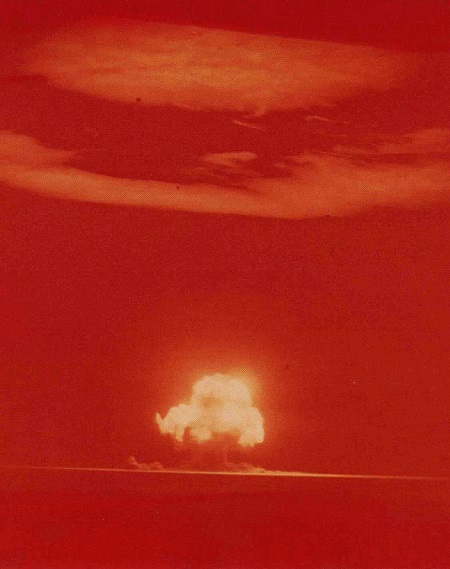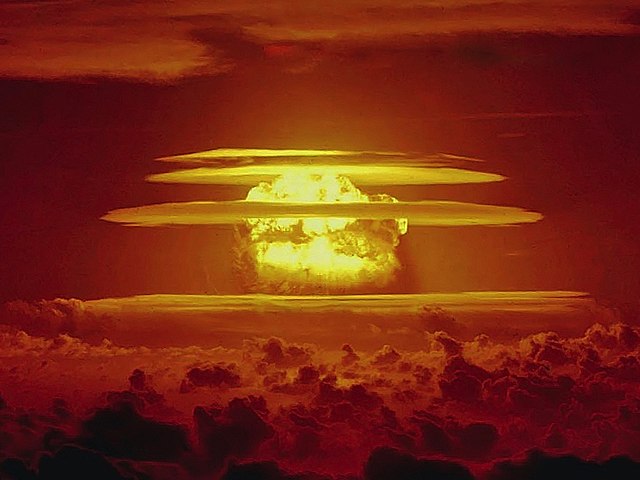Dear Dr. Z – I saw a series of articles in the New York Times and some of them were about nuclear weapons testing and that some countries might want to start testing weapons again. I can understand wanting to test the first nuclear weapons because we weren’t sure they’d work. But we tested a lot of nuclear weapons for a couple of decades and we know they work, plus I thought we could simulate all that on a computer. How come some nations might start testing again?
Well…think of it this way – we’ve been building and flying airplanes for over a century and we have developed some very good software that can be used to simulate a new airplane and its flight characteristics very convincingly. How comfortable would you feel flying on a new airplane, knowing that it had never been tested in real life, with a human at the controls and that the seats were full of humans (including you!) in the back? I’ve flown well over a million miles, but I’m not sure I’d feel comfortable being on an airplane that had never been tested outside of a computer.
Of course, airplanes are more complicated than nuclear weapons…but the stakes are higher. If you wouldn’t feel comfortable trusting your life to an untested airplane, would you feel comfortable trusting your country to untested nuclear weapons? Some might – some would not.
In early 1945 nuclear weapons were a solid theory, parts of which had been sort-of tested in experiments. But the Manhattan Project scientists and engineers were still learning how to turn their theory into a working weapon of a type that was unlike any other weapon previously made. The uranium weapon required unprecedented amounts of highly enriched uranium, as well as engineering a way to assemble a critical mass in a vanishingly short period of time. And the plutonium weapon required learning how to make plutonium production reactors and then to extract weapons-grade plutonium from the reactor fuel, as well as learning how to create a spherically symmetrical shock wave using explosive lenses (that, themselves had to be invented and tested) that had to detonate exactly simultaneously. The uranium weapon pushed the limits of our knowledge, but the theory and laboratory testing was solid enough that it was used without testing. But there was so much more about the plutonium weapon that was complex, novel, and untried that the decision was made to use some precious plutonium to make sure it would work when it was used in combat. And the success of the Trinity test gave President Truman and the various generals the confidence to order its use to help end the bloodiest and costliest war in history.

After the war, the US immediately started developing new weapons – more powerful (and paradoxically, less powerful), smaller and lighter, using (in some cases) different fuels, and, within a few decades, able to be put atop a missile. Each of these new designs, every new material, the various use cases – everything had to be tested to make sure that it would work. As just one example – fitting a nuclear weapon on a missile required shrinking the warhead to be small and light enough to be carried halfway around the world. This, in turn, required new configurations of the nuclear materials as well as ensuring that the electronics and explosives would survive the vibration and forces involved in being blasted into space on a missile followed by re-entry into the atmosphere…and would function properly at the end. And when the more-powerful fusion (thermonuclear) weapons were developed it was necessary to do all of this again for a new type of device.
At the same time, these were weapons of unprecedented power and nobody knew exactly what effect they would have. So in addition to the tests aimed at testing the weapon materials and designs, there were additional tests to help the scientists, engineers, and generals understand what sorts of buildings were most vulnerable, how far away the devastation would extend, how different forms of construction fared…even how well various types of food and beverages would survive to be eaten and drunk by survivors of a nuclear attack.
The problem with atmospheric nuclear weapons testing is that nuclear weapons produce a lot of radioactivity and eventually the 1963 nuclear powers (by now this included the Soviet Union, the UK, France, and, in 1964, China) agreed to stop their atmospheric nuclear weapons testing programs. That didn’t stop all nuclear weapons testing – it just moved the tests underground. Underground testing wouldn’t reveal whether or not a 20 kT blast would level a motel – but that had already been tested. And nuclear weapons scientists could examine the seismic traces to see how much energy – what yield – a specific weapon design would produce.
Subterranean nuclear weapons testing continued; the last underground American test took place in 1992, the last Russian test was in 1990; France and China last tested nuclear devices in 1996, and India and Pakistan last detonated nuclear devices in 1998. Since then, only North Korea – a very new nuclear weapons state – has tested nuclear weapons, with five tests between 2006 and 2017.
As time progresses our modeling software becomes ever more sophisticated and ever more capable, incorporating data and lessons learned from decades of testing. So by now you’d think we’d have tested enough weapons that we can pretty much know them backwards and forwards, wouldn’t you? And, indeed, the last American nuclear weapons test occurred in 1992, two years after the last Soviet/Russian test, while the UK hasn’t tested a nuclear weapon since 1987. China and France, the last two of the major nuclear powers, both last tested nuclear weapons in 1996, with flurry of testing by India and Pakistan in 1998. Since then, only North Korea has conducted nuclear weapons testing, conducting six tests between 2006 and 2017. The trend here is that the nations with the longest history with designing and testing nuclear weapons were the first to stop testing, followed by the more recent arrivals.
But then there’s the fact that the US has developed new nuclear weapons since our last nuclear detonation, deploying them without testing. I have to admit that I don’t know the details about these so I can’t weigh in on how substantial the differences are between the older weapons and the newer ones. But the article I linked to notes that the warhead itself is a tried-and-true design with some new hardware, so it’s likely that only the hardware really needed testing. But if everyone can simply recycle an existing warhead into a new package what might lead a nation to resume nuclear testing? Here, too, I have no special knowledge – but there are some possibilities that occur to me.
One is to simply have an all-up test of the entire device – a sort of quality assurance, the same as taking the occasional car off the production line to see if it’s up to snuff. There’s a difference between testing a warhead versus testing the entire weapon – just as a lovely engine might be attached to a flawed car. Not only that, but as one who has had to put a car in storage for months at a time, I know that components can age, stick, break, and find other ways to fail – I can understand wanting to see how the years have treated a complex weapon, wanting to make sure it still works as expected.
I can also understand wanting to monitor a test with the latest instruments – to see if the today’s instruments can glean more information than those of three decades ago. Today we can make more precise measurements of dozens of parameters, and we can make these at much shorter intervals, giving us the ability to “see” phenomena in far greater detail – to learn far more – than was possible at the time we last tested a nuclear device. Would this help us to refine our knowledge – maybe to help calibrate our models? I don’t know – but I suspect it would.
Will the US – or Russia, France, the UK, China, India, Pakistan, or any other nation – decide to resume nuclear testing? I wish I could answer that – being able to predict the future would be a nice skill to have. Alas, I can only guess, and my guess would be no more informed than yours. All that I can say is that there are new nuclear powers and there are nations that appear to be striving to join them – none of these nations have the same extensive history of nuclear weapon design and testing as the original nuclear powers and they might feel the need to test the devices into which they have poured so much time, effort, and national pride – if only to demonstrate to themselves and to potential foes that their threat is real. I guess we’ll have to wait and see who – if anyone – gives in to that temptation.
